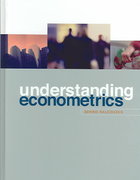Answered step by step
Verified Expert Solution
Question
1 Approved Answer
Two firms produce a homogeneous good. There are 10 customers in the market, each of whom is willing to purchase at most one unit of
Two firms produce a homogeneous good. There are 10 customers in the market, each of whom is willing to purchase at most one unit of the good at a price no higher than $1. Neither firm has any costs but firm 1 cannot produce more than 7 units whereas firm 2 can produce as many units as it wishes. The order of moves is as follows: Stage 1: Firm 1 chooses its price P1. Stage 2: Firm 2 observes P1 and chooses its price P2. Stage 3: Consumers observe both prices and decide whether or not they would like to purchase the good and, if so, from which firm. If both firms charge a price of less than $1 consumers would prefer to buy from the firm that charges the lower price. If both firms charge the same price all consumers prefer to buy the product from firm 1. If the price of firm 1 is less than or equal to the price of firm 2 but they cannot buy it from firm 1 (because of its capacity constraint), and the price of firm 2 is less than $1, then they would buy it from firm 2
Step by Step Solution
There are 3 Steps involved in it
Step: 1

Get Instant Access to Expert-Tailored Solutions
See step-by-step solutions with expert insights and AI powered tools for academic success
Step: 2

Step: 3

Ace Your Homework with AI
Get the answers you need in no time with our AI-driven, step-by-step assistance
Get Started


